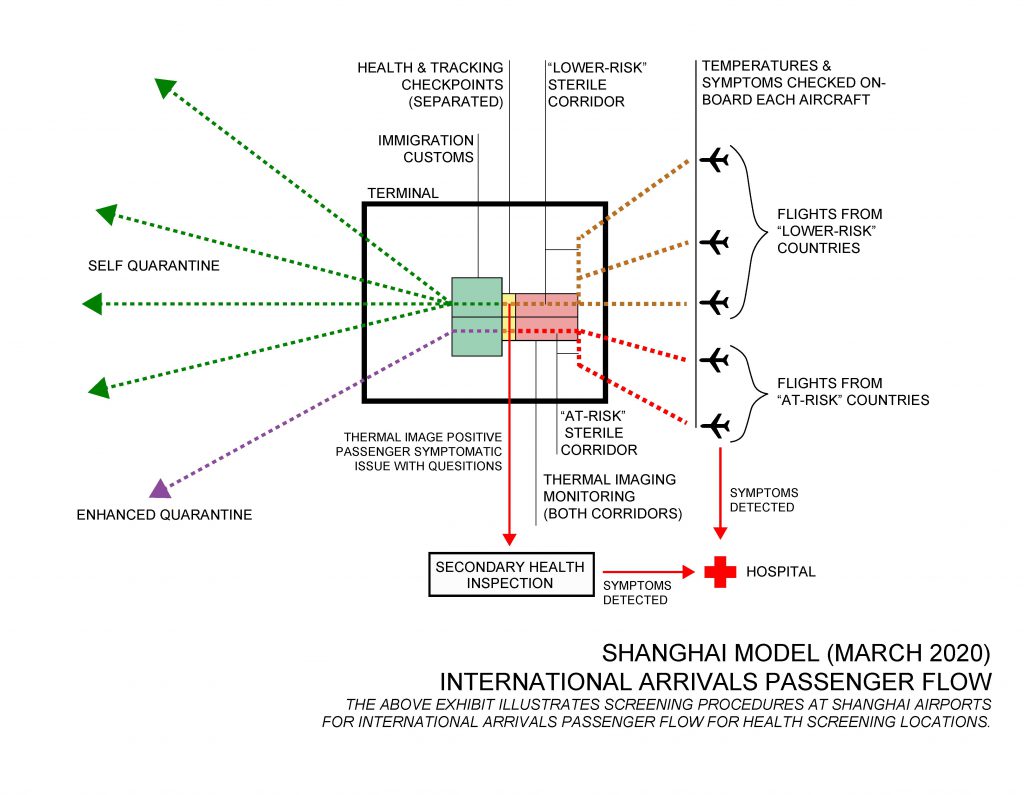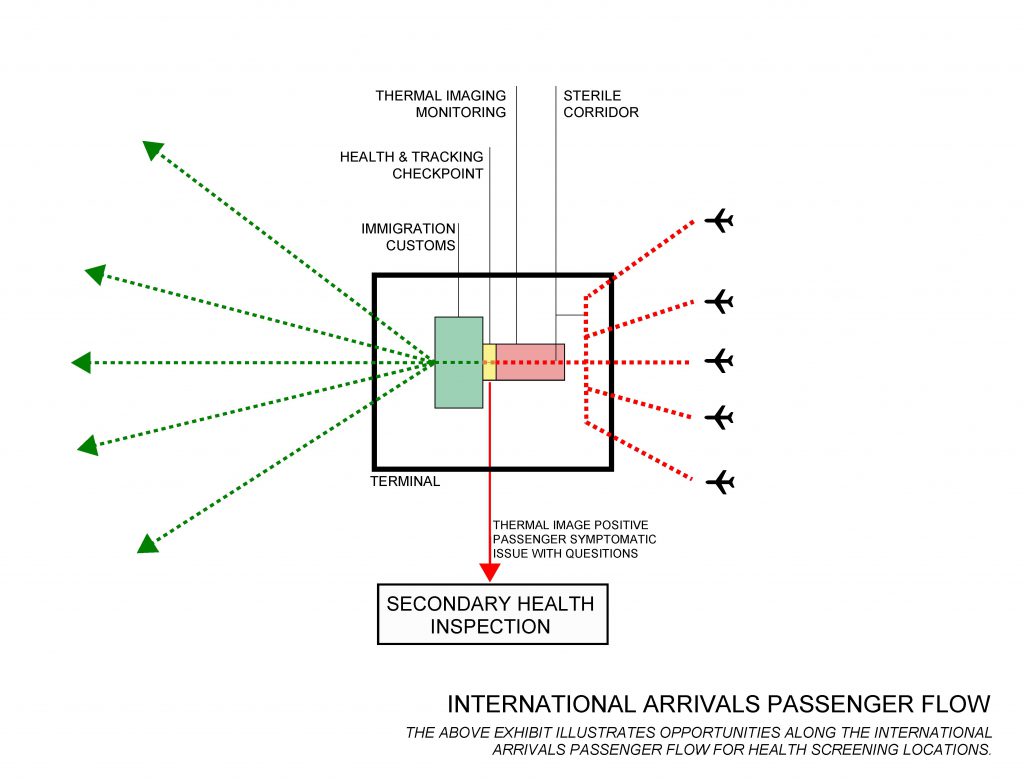Planning for the Recovery: Screening the Health of Arriving International Passengers
How and where should airports screen for symptoms of diseases like COVID 19? This is a question that many airports and governments around the world will need to answer. Health screenings along with quarantine spaces for international passengers already exist at many airports across Asia. While new developments in biometrics and advanced screening technologies might be how airports ultimately handle health screenings in the long-term, there are solutions if that enacted today can help to ensure the safety of the traveling public and airport staff.
Shanghai Case Study, March 2020
Quarantine and health screening procedures for international arrivals are standard during normal operating conditions at all airports in China. In response to COVID-19, many local/regional governments have introduced additional advanced screening procedures. The diagram illustrates the procedures implemented at both Shanghai Hongqiao International Airport (SHA) and Shanghai Pudong International Airport (PVG) for arriving international passengers. First, passengers undergo basic screening on the aircraft before deplaning. This involves a temperature check as well as a basic questionnaire conducted by a public health official. Symptomatic passengers are taken to a designated hospital via an ambulance standing by on the tarmac. Passengers arriving from at-risk countries take a segregated sterile corridor to a dedicated space in the Customs and Immigration hall. From there, passengers are escorted to a pick-up area and transported to designated quarantine locations. If a passenger exhibits any symptoms while in the terminal area, they can be referred to a secondary health inspection within the airport or a local hospital. While this approach is very thorough it requires substantial resources, which raises the question of whether the process is feasible on a global scale.
Consider: Instituting New Procedures for International Arrivals
As shown in Asia, using technologies available today it is possible to implement health screening and quarantine procedures. It is also important that airports consider prioritizing these screening procedures for arriving international passengers with increased attention given to “at risk” countries to limit the spread of infectious disease. How might airports implement these measures within the constraints of their existing facilities? To answer this question, L&B Terminal experts developed a diagram that offers one possible terminal flow reconfiguration for arriving international passengers.
A sterile corridor would provide the optimal opportunity for health screening as all inbound passengers pass through it. The ideal location in this corridor would be upstream of where passengers enter queueing and congregate at Customs and Immigration, as shown in the diagram. Several available technologies, including thermal imaging, can help determine if a passenger is symptomatic. In this application, a series of thermal cameras would scan each passenger as they walk-by. A higher than normal temperature would flag the passenger to a health screener. The passenger could then be asked to fill out a questionnaire to help the health screening personnel determine if the traveler can proceed or be diverted from the inbound border control to a secondary health inspection. Secondary Screening areas within Customs and Immigration may provide temporary opportunities to accommodate health screening and quarantine needs. As airports evolve in response to future health crises, opportunities exist to create new programmatic spaces to address health-screening procedures. This planning process will raise new questions that require answers, such has how will symptomatic passengers be escorted out of the facility to reduce the transmission of infectious pathogens and where will existing facilities accommodate future programmatic requirements such as health screening?

